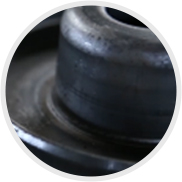 Afrikaans
Afrikaans  Albanian
Albanian  Amharic
Amharic  Arabic
Arabic  Armenian
Armenian  Azerbaijani
Azerbaijani  Basque
Basque  Belarusian
Belarusian  Bengali
Bengali  Bosnian
Bosnian  Bulgarian
Bulgarian  Catalan
Catalan  Cebuano
Cebuano  Corsican
Corsican  Croatian
Croatian  Czech
Czech  Danish
Danish  Dutch
Dutch  English
English  Esperanto
Esperanto  Estonian
Estonian  Finnish
Finnish  French
French  Frisian
Frisian  Galician
Galician  Georgian
Georgian  German
German  Greek
Greek  Gujarati
Gujarati  Haitian Creole
Haitian Creole  hausa
hausa  hawaiian
hawaiian  Hebrew
Hebrew  Hindi
Hindi  Miao
Miao  Hungarian
Hungarian  Icelandic
Icelandic  igbo
igbo  Indonesian
Indonesian  irish
irish  Italian
Italian  Japanese
Japanese  Javanese
Javanese  Kannada
Kannada  kazakh
kazakh  Khmer
Khmer  Rwandese
Rwandese  Korean
Korean  Kurdish
Kurdish  Kyrgyz
Kyrgyz  Lao
Lao  Latin
Latin  Latvian
Latvian  Lithuanian
Lithuanian  Luxembourgish
Luxembourgish  Macedonian
Macedonian  Malgashi
Malgashi  Malay
Malay  Malayalam
Malayalam  Maltese
Maltese  Maori
Maori  Marathi
Marathi  Mongolian
Mongolian  Myanmar
Myanmar  Nepali
Nepali  Norwegian
Norwegian  Norwegian
Norwegian  Occitan
Occitan  Pashto
Pashto  Persian
Persian  Polish
Polish  Portuguese
Portuguese  Punjabi
Punjabi  Romanian
Romanian  Russian
Russian  Samoan
Samoan  Scottish Gaelic
Scottish Gaelic  Serbian
Serbian  Sesotho
Sesotho  Shona
Shona  Sindhi
Sindhi  Sinhala
Sinhala  Slovak
Slovak  Slovenian
Slovenian  Somali
Somali  Spanish
Spanish  Sundanese
Sundanese  Swahili
Swahili  Swedish
Swedish  Tagalog
Tagalog  Tajik
Tajik  Tamil
Tamil  Tatar
Tatar  Telugu
Telugu  Thai
Thai  Turkish
Turkish  Turkmen
Turkmen  Ukrainian
Ukrainian  Urdu
Urdu  Uighur
Uighur  Uzbek
Uzbek  Vietnamese
Vietnamese  Welsh
Welsh  Bantu
Bantu  Yiddish
Yiddish  Yoruba
Yoruba  Zulu
Zulu belt drive with idler pulley
Understanding Belt Drive Systems with Idler Pulleys
Belt drive systems are a critical aspect of mechanical engineering, often utilized in various industrial applications for their efficiency and reliability. This article delves into the intricacies of belt drive systems, particularly focusing on the inclusion of idler pulleys, their design, functionality, and the benefits they provide in machinery operations.
What is a Belt Drive?
A belt drive is a mechanism that uses a belt to transfer power between pulleys. Typically, the system consists of at least two pulleys connected by a belt—usually made of rubber or other durable materials. When one pulley, the driver, rotates, it transmits motion to the second pulley, the driven, through the belt. Belt drives are favored for their ability to transmit power over distances, accommodate misalignment, and dampen vibrations, making them a popular choice in machinery, vehicles, and various power transmission applications.
The Role of Idler Pulleys
Idler pulleys play an essential role in the configuration and performance of belt drive systems. An idler pulley is an additional pulley placed in the belt path to provide tension, guide the belt, and alter the direction of the belt's motion. While it does not drive a load directly, the idler pulley contributes significantly to the overall efficiency and effectiveness of the belt drive system.
Key Functions of Idler Pulleys
1. Tension Management Maintaining the correct tension in the belt is critical for optimal performance. A loose belt can slip off the pulleys or cause power transmission inefficiencies, while a belt that is too tight can lead to increased wear and premature failure. Idler pulleys help adjust and stabilize the tension in the belt, ensuring that it operates within its designed parameters.
2. Belt Alignment Belt misalignment can lead to uneven wear, inefficient power transfer, and potential system failure. Idler pulleys aid in realigning the belt, ensuring that it runs smoothly along its intended path. This alignment helps minimize vibrations and noise, contributing to a quieter and more efficient operation.
belt drive with idler pulley

3. Changing Direction In some applications, it may be necessary to change the direction of the belt's movement. Idler pulleys can effectively redirect the belt without needing additional components. This feature is especially beneficial in complex machinery configurations where space is at a premium.
4. Noise Reduction The operation of a belt drive system can generate significant noise. Idler pulleys can help reduce this noise by maintaining proper tension and alignment, which in turn minimizes vibration and friction. A quieter operation is desirable in many applications, particularly in residential or office environments.
5. Load Distribution In cases where multiple belts are involved, idler pulleys can help distribute the load more evenly across the system. This distribution reduces the risk of overloading any single pulley, enhancing the longevity and reliability of the entire system.
Design Considerations
When designing a belt drive system with idler pulleys, several factors should be taken into account. The material of the belt and pulleys must be selected based on their operating conditions, including temperature, load, and environmental factors. Additionally, the size and placement of idler pulleys are critical; they must be positioned in such a way that they do not interfere with the normal operation of the system while still providing the necessary support.
Applications of Belt Drive Systems with Idler Pulleys
Belt drive systems with idler pulleys are commonly found in numerous applications across different industries. In automotive engines, for instance, serpentine belts use idler pulleys to drive multiple accessories efficiently. In manufacturing, conveyor systems often employ belt drives with idler pulleys to manage complex routing and increasing efficiency. Additionally, exercise equipment and appliances like washing machines often utilize similar designs to achieve optimal performance.
Conclusion
Belt drive systems, particularly those incorporating idler pulleys, function as a versatile and efficient means of power transmission in various industrial and domestic applications. Understanding the roles and benefits of idler pulleys can aid engineers and designers in creating systems that maximize performance while minimizing wear and maintenance. As technology advances, the importance of these components in mechanical systems will continue to evolve, shaping the future of power transmission solutions.
-
Revolutionizing Conveyor Reliability with Advanced Rubber Lagging PulleysNewsJul.22,2025
-
Powering Precision and Durability with Expert Manufacturers of Conveyor ComponentsNewsJul.22,2025
-
Optimizing Conveyor Systems with Advanced Conveyor AccessoriesNewsJul.22,2025
-
Maximize Conveyor Efficiency with Quality Conveyor Idler PulleysNewsJul.22,2025
-
Future-Proof Your Conveyor System with High-Performance Polyurethane RollerNewsJul.22,2025
-
Driving Efficiency Forward with Quality Idlers and RollersNewsJul.22,2025





























